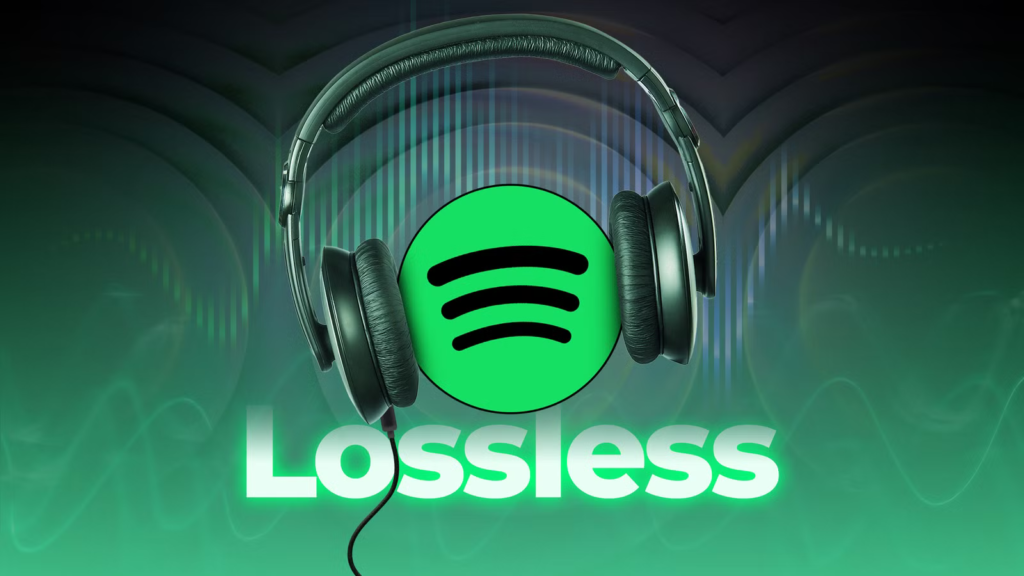Spotify recently picked up lossless streaming, something that should have been a win for audiophiles everywhere. Despite that, Spotify’s lossless option hasn’t won me over.
Spotify took a long time getting into the lossless streaming game; most other music streaming services have offered it for years now. One in particular, Qobuz, has been my favorite for a long time.
What is lossless audio like on Spotify?
According to Spotify, their lossless streaming (and download) option has 24-bit audio with a sample rate of 44.1KHz.
When I put that directly against their lowest-quality streaming option, the difference was immediately obvious. However, as I notched up the quality to high, it became pretty hard to distinguish, and I suspect the limiting factors were often the songs themselves rather than the limits of 24-bit/44KHz audio.
What do sample rate and bit depth mean?
For the purposes of listening to music, the bit depth (24-bit, in this case) tells you the maximum difference in loudness between the quietest sound and the loudest sound. 24-bit works out to a difference of up to 144 decibels, which is usually plenty—you’re not likely to find a song that makes use of more than that.
The sample rate tells you how many times the sound you’re listening to was sampled per second. So, a sample rate of 44.1KHz corresponds to 44,100 samples per second. As a rule of thumb, the highest-frequency sound that you can record at any given sample rate is half, so a 44.1KHz recording could contain sounds all the way up to 22KHz, well beyond the limit of normal human hearing.
While ultra-high sample rates (like 192KHz) might not be immediately useful to your listening experience, it can provide helpful overhead to audio engineers that have to turn raw recordings into finished products.
Qobuz supports higher quality audio
While Spotify’s new lossless setting is definitely a step-up, Qobuz offers up to 24-bit/192KHz audio.
There is some debate about whether you’ll ever actually need a sample rate (or bit depth, for that matter) that high, but it is nice to have the option available if you want it. Plenty of people swear up and down that they can hear the difference, and if that makes listening to music better, what’s the harm?
Does Qobuz cost more than Spotify?
Qobuz’s regular streaming plans cost about the same as Spotify’s plans, except for the Sublime plans, which offer a discount on music you can buy and keep forever. Qobuz also offers a discount to annual subscribers that make it less expensive than Spotify.
Solo
Duo
Family
Student
Spotify
$12
$17
$20
$6
Qobuz
$13 ($10.83 annually)
$18 ($15 annuallly)
$21 ($18 annually)
$5
Qobuz Sublime
$15
$22.50
$29
NA
Qobuz lets you own your music
The big selling point for me comes from their slightly more expensive set of plans.
If you opt in, you can get up to 60% discount on DRM-free, lossless audio content that you own forever.
That 60% discount is pretty significant. No matter where you shop, lossless music will cost anywhere between $10 per album to as much as $50 per album. Compared to vinyl records, it isn’t all that expensive, but if you buy regularly, that discount adds up.
One you buy it, however, you get to keep it. You can put it on a disk and stick it in a CD player. You could back it up to a hard drive and keep it in a safe place for the future. Unless you delete the files, the album is yours to keep.
Owning your music matters
In recent years, physical media like CDs, vinyl records, and even cassettes have surged in popularity. Part of that is nostalgia, but part of it is also practical: once you own a CD or record, you don’t have to worry about a licensing change suddenly depriving you of it.
Quickly skimming my old Spotify playlists, I found more than a dozen examples of songs I’d added that are “no longer available in my region.” If I try to play one of them, it just skips.
Spotify isn’t alone in this. Apple and Amazon have both faced controversy in the past for this sort of thing. Apple has faced multiple lawsuits over the removal of things that people “purchased” on iTunes due to changes in licensing terms, and Amazon has faced a class action lawsuit over the removal of purchased Prime Video content.
Lossless and Hi-Fi isn’t everything
Despite the benefits that you can get from lossless, high-fidelity formats, it isn’t the only factor that determines audio quality, and I’d argue it isn’t even the most important one.
An album with terrible mixing and mastering is going to sound bad whether you’re listening to a 16-bit, 24kHz version or a 32-bit, 192KHz version.
If the instrument or vocals for a song were recorded using equipment that colors the tone in a way that you dislike, the most you’ll get out of a hi-fi recording are lots of details you find unpleasant.
Regardless of where you stream or buy your music, take the time to find versions of songs that you like.
How you listen to music matters at least as much as what you’re listening to too, so don’t neglect your audio equipment either. A pair of disposable earbuds from an airline aren’t going to sound good, no matter how hi-fi an audio recording is. A decent amplifier and some headphones go a long way, and you don’t need to break the bank, either.
Brand
Audio-Technica
Material
Aluminum

